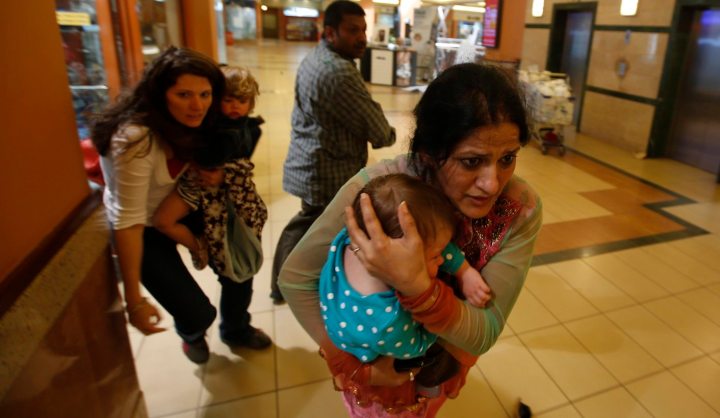ISS TODAY
How is Africa dealing with young extremists?

To prevent further radicalisation and abuse, juvenile terror suspects need special attention, separate from adults.
First published by ISS Today
What do African societies do when they suspect their children of being terrorists – or when their young extremists give up their guns and come home?
Considering Africa’s youth bulge, many members of violent extremist groups will naturally fall between the ages of 15 and 35. International laws, standards and good practices require that governments and security agencies take a different approach to the rehabilitation and reintegration of juveniles.
Experts believe that juveniles are vulnerable, and that they should not only be detained separately but also undergo a different trial process. However, a lack of capacity and facilities, among other problems, hinder the fulfilment of this obligation.
One 13-year-old boy in Kenya said he and other children were arrested and taken to a juvenile remand home by police while travelling from a madrassa (religious school). “I don’t know why I was arrested, I was told I was arrested for intent to [radicalise others],” he said. He had been in the home for more than a week and hadn’t yet been arraigned in court.
Social workers at the home said the child was suspected of being in a radicalisation cell. He hadn’t received any form of rehabilitation and the social workers were worried that he was already starting to radicalise other children in the home.
According to the United Nations Office of the Special Representative of the Secretary-General for Children and Armed Conflict, more than 2,500 boys were recruited and over 1,600 children abducted by al-Shabaab in 2018.
Out-of-school children and unemployed youth are considered the most vulnerable group to be exploited by violent extremists. When discussing defectors and returnees, there are no age distinctions, so juveniles – whether perpetrators of violence or not – are usually treated as adults during the trial and detention stages.
The recruitment and exploitation of children by terror groups such as al-Shabaab is considered a serious form of violence against children. Given their increased psychological vulnerability, several good practices have been put in place to guide states on how to deal with juveniles associated with violent extremist groups.
Some African states, despite their lack of capacity and resources to deal with juveniles, have well-established regulations in place. Many good practices, like the Global Counterterrorism Forum’s (GCTF) Neuchâtel Memorandum, anchored on the provisions of the UN Convention on the Rights of a Child on dealing with juveniles, suggest that judicial systems consider alternatives to arrest, detention and imprisonment.
This should include what happens during the pre-trial stage, given that children and youth placed in prisons and detention centres with adults may be at greater risk of being further radicalised or abused. The good practices include recommendations that rehabilitation start in the pre-trial period and include a multi-sector approach.
There are also problems regarding the reintegration of juveniles. This includes stigmatisation from communities and a lack of support for them when they return to society. Working and single parents can’t continuously watch over their children. Some children and youths are placed in detention centres and remand homes to prevent them from committing attacks or radicalising others. But here they themselves are at risk of being radicalised by other detainees.
During a recent workshop in Uganda organised by the Institute for Security Studies for the GCTF East Africa working group, representatives from security and judicial sectors in the region considered possible solutions. These included identifying children at risk of committing crimes and ensuring early intervention. Developing a multi-agency mechanism with officials from other justice sectors, as well as community leaders and parents, especially those whose children are at risk, was also discussed.
One example from Kenya was the use of the “10 households” government initiative. This is a way for communities to get to know each other in a bid to reduce insecurity. A “head” of a set of 10 households is appointed to keep track of vulnerable out-of-school children and individuals in those households, and to help with their rehabilitation.
Workshop participants emphasised that to develop effective rehabilitation programmes, the factors that make youth vulnerable to being exploited in their countries, had to be understood. Other recommendations include fast-tracking the trial process and ensuring that the juvenile’s time in detention is as short as possible. Juveniles should also be separated from older inmates and other high-risk juveniles.
To deal with stigmatisation, participants from the Uganda meeting recommended that the state finance foster homes where the juveniles could reside during their trial period, as well as during rehabilitation and reintegration should they be unable to return to their communities. Regarding the lack of supervision, some participants suggested that guardians be appointed to conduct weekly check-ups and offer support where needed.
Despite the problems, African states should be encouraged to use existing structures to provide better support for children and youth associated with violent extremist groups. The fair treatment of juveniles and attention to their rehabilitation and reintegration would help prevent terrorism and re-offending. DM
Isel van Zyl is a junior researcher, Transnational Threats and International Crime, ISS Pretoria and Ruth Juliet N Gachanja, a child rights advocate, Kenya

















 Become an Insider
Become an Insider